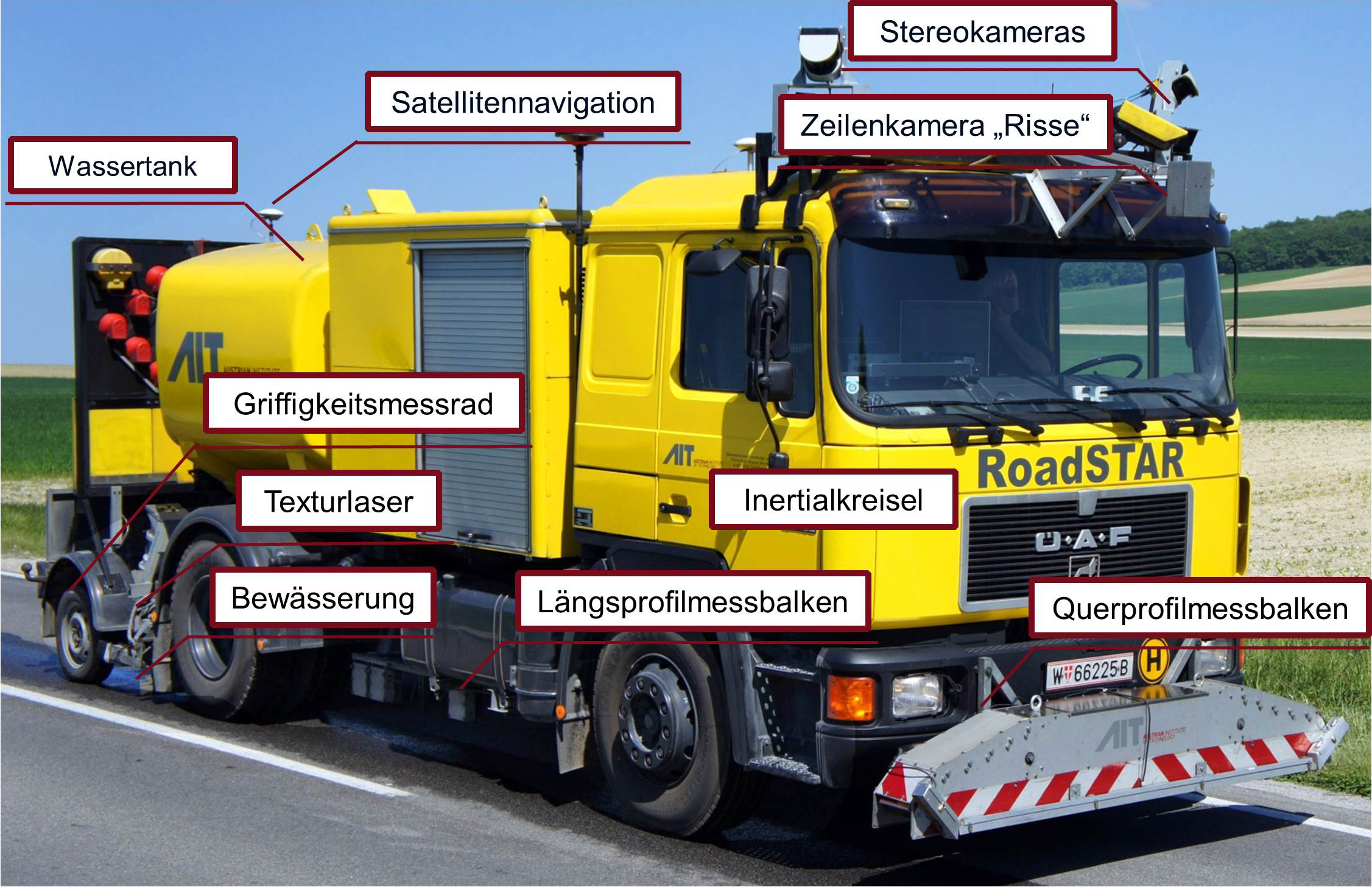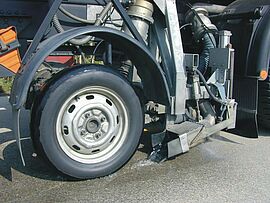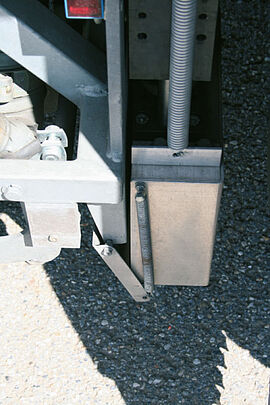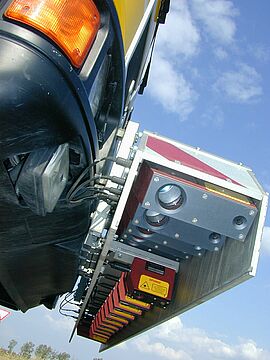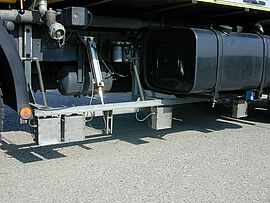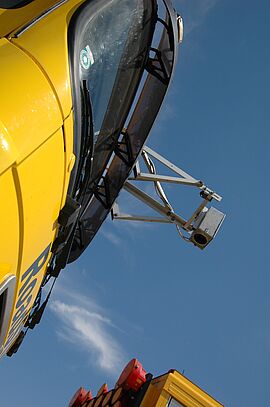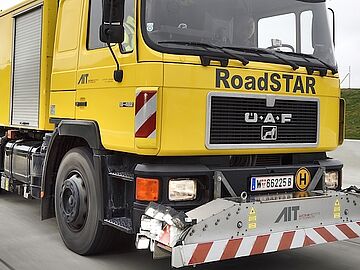The mobile laboratory "RoadSTAR" records in a single pass all parameters of the road that are essential for the road maintainer or expert without obstructing the flow of traffic. The testing of all road safety relevant condition characteristics is carried out within the accreditation. This enables, among other things, the independent examination of construction contract provisions, for example at the time of approval or before the end of the warranty period.
The grip of the road surface is determined with the modified Stuttgart friction meter, System RoadSTAR (RVS11.06.65). For this purpose, a rotatably mounted measuring tire is moved in longitudinal direction on wet road surface under constant wheel load and constant slip of 18%. To measure the skid resistance of the road surface, the frictional force, i.e. the activatable force between the measuring tire and the road surface, is set in relation to the wheel load and the calculated value is called friction coefficient µ (RVS 11.06.74, ON B3591, ONR CEN/TS 13036-2, ONR CEN/TS 15901-1).
Macro texture measurement (RVS11.06.66) is carried out by means of a special laser sensor mounted on the measuring vehicle in front of the watering unit of the skid resistance measuring tire in the area of the right wheel track. During driving, texture profiles of the road surface with a length of at least 100 mm are scanned at high frequency (1 mm measuring point distance) in 1 m longitudinal intervals. The texture characteristic MPD (EN ISO 13473-1 or ISO 13473-2) is calculated on the basis of the height profiles.
For transverse evenness measurement (RVS11.06.67), a beam with 23 laser sensors arranged in a fan shape is attached to the front part of the vehicle to measure the transverse profile. With a construction width of only 2.5 m, a lane width of 3.3 m (point distance in the transverse profile: 15 cm) is measured. While driving, the respective distance sensor - road surface is measured. From this, both the cross profile and the rut depths (ONR EN 13036-8) under the 2 m lath can be determined mathematically. The cross slope is determined by a mean cross profile and the high-precision angle data of the inertial gyro system.
The continuous measurement of the longitudinal flatness (RVS 11.06.68) is carried out with the aid of a measuring bar mounted in the right wheel track on the RoadSTAR with 4 laser sensors at longitudinal distances of 0; 0.1; 1.0 and 2.0 m. While driving, the respective distance sensor - road surface is measured and the longitudinal profile of the road is determined by means of the profilometer method (ONR EN 13036-6). The longitudinal flatness parameter IRI is evaluated based on the longitudinal road profile (ONR EN16036-5) summed up to 50 m each.
The visual detection of the surface damages and cracks of the roadway is done by a digital line scan camera (RVS 11.06.69). Due to the detection width of four meters it is possible to record a width that is larger than the width of the lane. This enables the detection of longitudinal seam cracks or open joints between two paver lanes, for example. In the direction of travel, a line is displayed via a path signal every two millimeters of travelled distance. This line contains 2048 pixels, so that 4000 mm are mapped to 2048 pixels transverse to the direction of travel. The guaranteed measuring accuracy of the generated images is thus two millimeters of crack width. Cracks with a width of less than two millimeters can be detected. The end product is digital images of the road surface with a resolution of 2048 x 1470 pixels. Each image therefore corresponds to three meters in the direction of travel and four meters transverse to the direction of travel.


